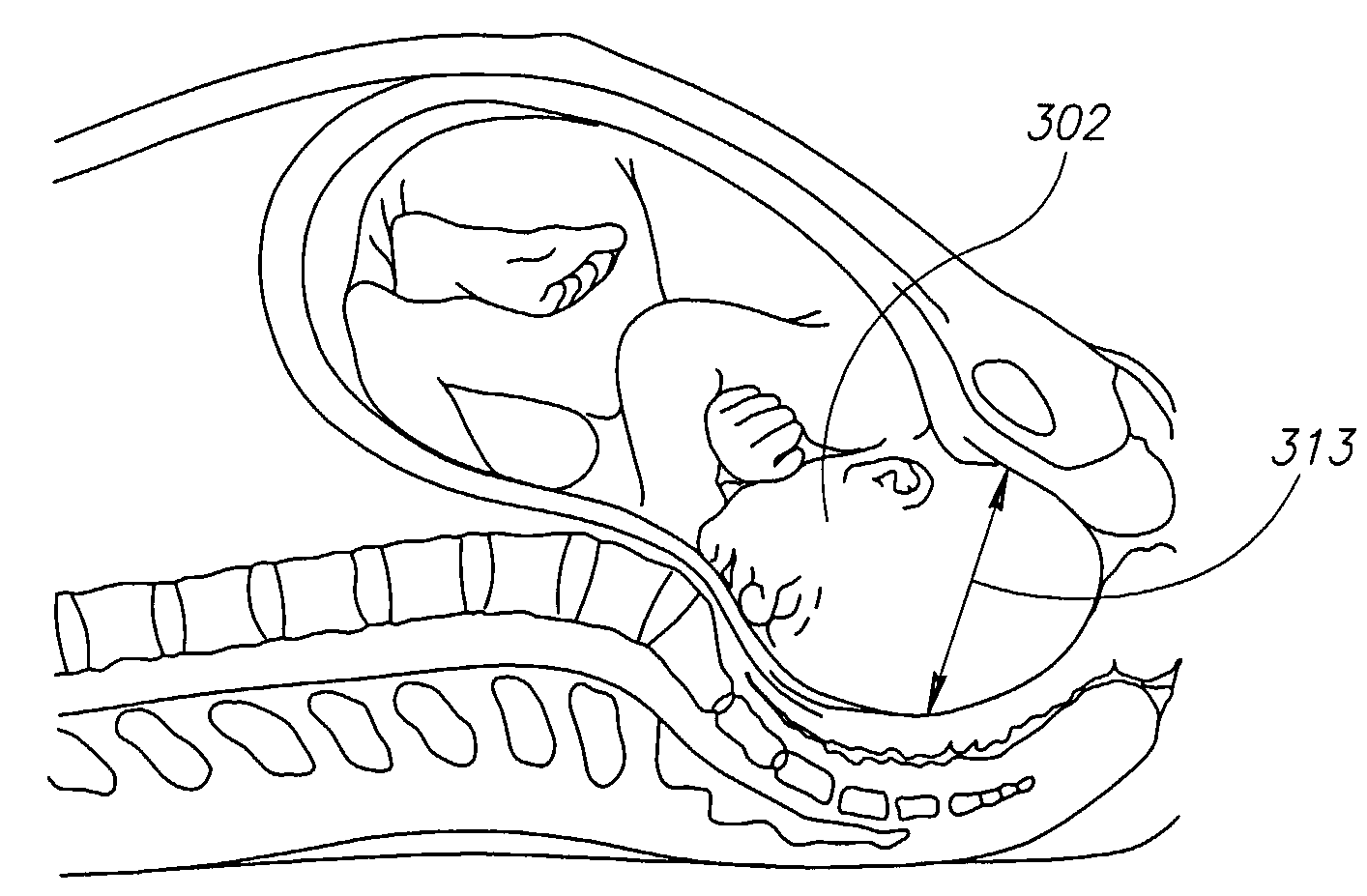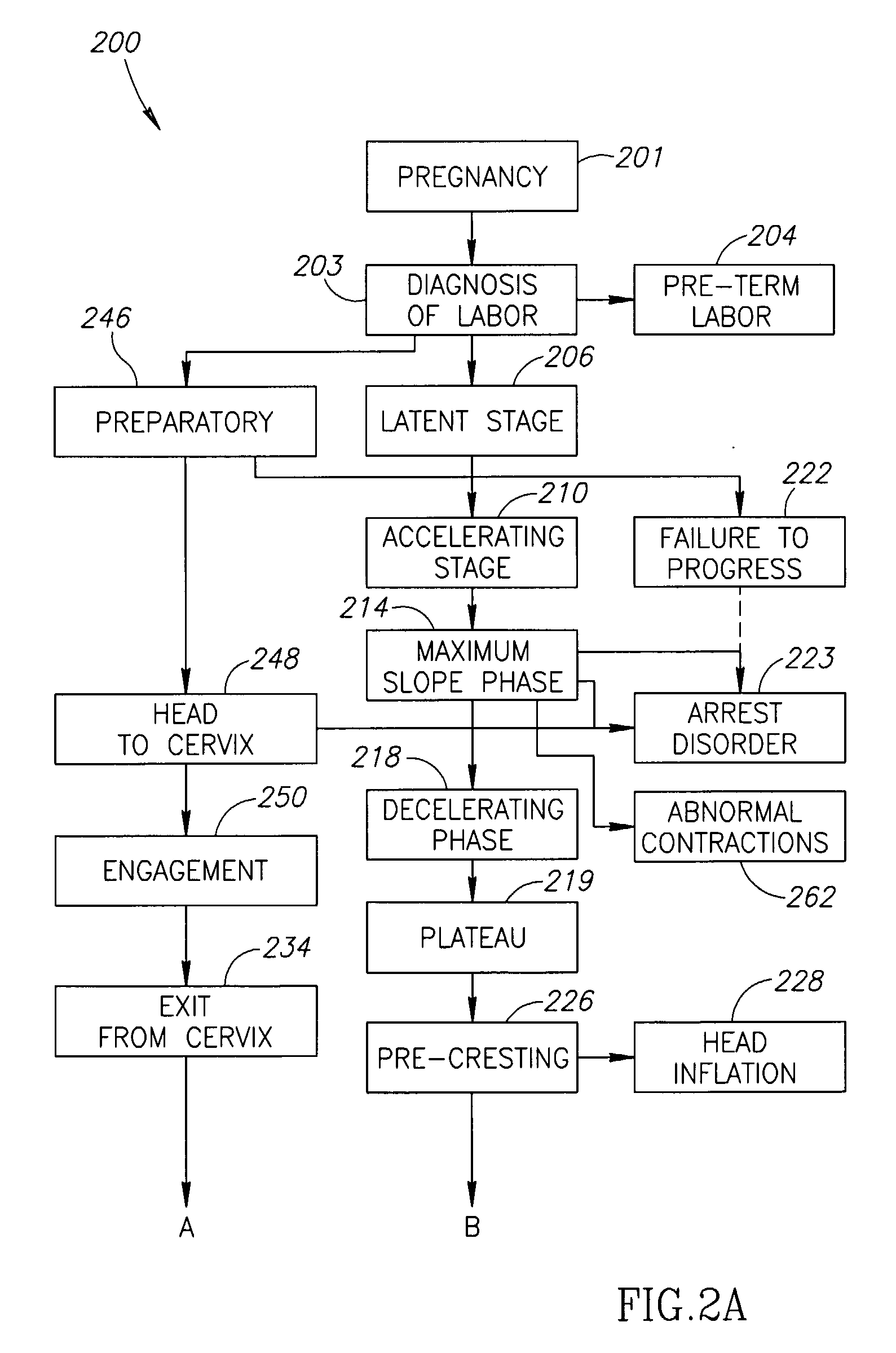State Based Birth Monitoring System
a state-based, birth monitoring technology, applied in the field of birth monitoring, can solve the problems of 50% false positive rate, inability to determine and inability to accurately identify the state of the birth process
- Summary
- Abstract
- Description
- Claims
- Application Information
AI Technical Summary
Benefits of technology
Problems solved by technology
Method used
Image
Examples
Embodiment Construction
State Based Monitoring Overview
[0244]Referring back to FIG. 1, current practice is to chart the progress of a birth process along the graph of FIG. 1. As this graph is an average of many cases, a significant deviation must be detected if a caregiver is to be sure that there is a potential problem.
[0245]Even in non-pathological cases, this graph is problematic. As can be seen from the continuous and smooth nature of the graph, dilatation values cannot generally be used to identify the state of labor. Instead, an ongoing change or lack of change in dilatation values must be used (in the prior art). Further, as will be explained below, at large dilatation (>7 cm) the supposedly numerical values are actually symbolic values used to indicate an estimation of the labor progression. Thus, for example, even though an actual dilatation may be greater than 10 cm at maximum dilatation, an obstetrician will report “10 cm”. This results in a circular logic where an estimated state of labor is us...
PUM
 Login to View More
Login to View More Abstract
Description
Claims
Application Information
 Login to View More
Login to View More - R&D
- Intellectual Property
- Life Sciences
- Materials
- Tech Scout
- Unparalleled Data Quality
- Higher Quality Content
- 60% Fewer Hallucinations
Browse by: Latest US Patents, China's latest patents, Technical Efficacy Thesaurus, Application Domain, Technology Topic, Popular Technical Reports.
© 2025 PatSnap. All rights reserved.Legal|Privacy policy|Modern Slavery Act Transparency Statement|Sitemap|About US| Contact US: help@patsnap.com



